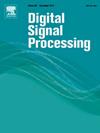Combine multi-order representation learning and frame optimization learning for skeleton-based action recognition
IF 2.9
3区 工程技术
Q2 ENGINEERING, ELECTRICAL & ELECTRONIC
引用次数: 0
Abstract
Skeleton-based action recognition has broad application prospects in many fields such as virtual reality. Currently, the most popular way is to employ Graph Convolutional Networks (GCNs) or Hypergraph Convolutional Networks (HGCNs) for this task. However, GCN-based methods may heavily rely on the physical connectivity relationship between joints while lack the capture of higher-order information about interactions among distant joints, and HGCN-based methods usually introduce unnecessary noise when capturing low-order information of skeleton structures with simple topology. Besides, the current methods do not deal well with redundant frames and confusing frames. These limitations hinder the improvement of recognition accuracy. In this paper, we propose a novel network, called Hyper-Net, which combines multi-order representation learning and frame optimization learning for skeleton-based action recognition. Specifically, the proposed Hyper-Net contains Temporal-Channel Aggregation Graph Convolution (TCA-GC), Spatial-Temporal Aggregation Hypergraph Convolution (STA-HC) and Frame Optimization Learning (F-OL) modules. The TCA-GC aggregates low-order and local information from simple joint and bone topologies across different temporal and channel dimensions. The STA-HC captures high-order and global information from complex motion streams as well as solving the problem of spatial-temporal weight imbalance. The F-OL can adaptively extract key frames and distinguish confusing frames, thus improving the ability of the network to recognize confusing actions. A large number of experiments are conducted on the NTU RGB+D, NTU RGB+D 120 and NW-UCLA datasets for action recognition task. Experimental results demonstrate the superiority and effectiveness of the proposed network.
结合多阶表示学习和帧优化学习,实现基于骨骼的动作识别
基于骨骼的动作识别在虚拟现实等许多领域都有广阔的应用前景。目前,最流行的方法是采用图卷积网络(GCN)或超图卷积网络(HGCN)来完成这项任务。然而,基于 GCN 的方法可能会严重依赖关节间的物理连接关系,而缺乏对远处关节间相互作用的高阶信息的捕捉;而基于 HGCN 的方法在捕捉拓扑结构简单的骨架结构的低阶信息时,通常会引入不必要的噪声。此外,目前的方法不能很好地处理冗余帧和混淆帧。这些局限性阻碍了识别准确率的提高。在本文中,我们提出了一种名为 Hyper-Net 的新型网络,它将多阶表示学习和帧优化学习相结合,用于基于骨架的动作识别。具体来说,所提出的 Hyper-Net 包含时空通道聚合图卷积(TCA-GC)、时空聚合超图卷积(STA-HC)和帧优化学习(F-OL)模块。TCA-GC 可在不同的时间和通道维度上聚合来自简单关节和骨骼拓扑的低阶和局部信息。STA-HC 可从复杂的运动流中捕捉高阶和全局信息,并解决时空权重不平衡的问题。F-OL 可以自适应地提取关键帧并区分混淆帧,从而提高网络识别混淆动作的能力。在北师大 RGB+D、北师大 RGB+D 120 和 NW-UCLA 数据集上进行了大量的动作识别任务实验。实验结果证明了所提出网络的优越性和有效性。
本文章由计算机程序翻译,如有差异,请以英文原文为准。
求助全文
约1分钟内获得全文
求助全文
来源期刊

Digital Signal Processing
工程技术-工程:电子与电气
CiteScore
5.30
自引率
17.20%
发文量
435
审稿时长
66 days
期刊介绍:
Digital Signal Processing: A Review Journal is one of the oldest and most established journals in the field of signal processing yet it aims to be the most innovative. The Journal invites top quality research articles at the frontiers of research in all aspects of signal processing. Our objective is to provide a platform for the publication of ground-breaking research in signal processing with both academic and industrial appeal.
The journal has a special emphasis on statistical signal processing methodology such as Bayesian signal processing, and encourages articles on emerging applications of signal processing such as:
• big data• machine learning• internet of things• information security• systems biology and computational biology,• financial time series analysis,• autonomous vehicles,• quantum computing,• neuromorphic engineering,• human-computer interaction and intelligent user interfaces,• environmental signal processing,• geophysical signal processing including seismic signal processing,• chemioinformatics and bioinformatics,• audio, visual and performance arts,• disaster management and prevention,• renewable energy,
 求助内容:
求助内容: 应助结果提醒方式:
应助结果提醒方式:


